Jackfruit seeds, often overlooked and discarded, are a hidden gem in culinary traditions across Asia and beyond. These creamy, starchy seeds, enclosed within the spiky exterior of the jackfruit, offer a mild, nutty flavor and a texture reminiscent of chestnuts or potatoes when cooked. While the flesh of the jackfruit is celebrated in both sweet and savory dishes, the seeds hold equal potential, particularly in soups that prioritize sustainability, nutrition, and depth of flavor. This article explores the art of crafting a comforting jackfruit seed soup, from selecting the finest seeds to mastering time-honored cooking techniques.
The Nutritional Powerhouse of Jackfruit Seeds
Before diving into the recipe, it’s essential to appreciate why jackfruit seeds deserve a place in your kitchen. Rich in dietary fiber, protein, and essential minerals like potassium, magnesium, and iron, these seeds are a low-cost, plant-based powerhouse. A 100-gram serving of boiled jackfruit seeds contains approximately 135 calories, 1.5 grams of protein, and 1.5 grams of fiber, making them an excellent addition to balanced diets. Their starchy composition also lends a creamy richness to soups, eliminating the need for heavy creams or dairy.
Selecting and Preparing Jackfruit Seeds
The journey to a perfect soup begins with sourcing quality seeds. Fresh jackfruit seeds are pale beige, firm, and free of blemishes. If using seeds from a whole jackfruit, ensure they are fully mature—immature seeds tend to be softer and less flavorful. For convenience, many Asian grocery stores now sell dried or frozen jackfruit seeds, which can be rehydrated before use.
Preparation Steps:
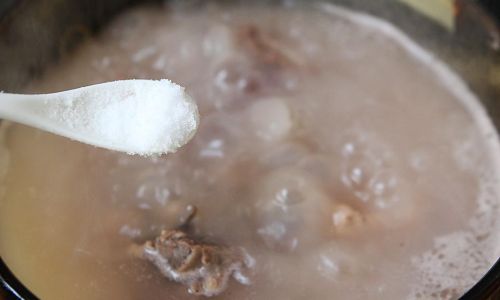
- Cleaning: Rinse the seeds under cool water to remove any residual fruit pulp or debris.
- Boiling or Soaking:
- Boiling: Place seeds in a pot, cover with water, and simmer for 20–25 minutes until tender. This softens the outer shell and inner kernel.
- Soaking: For dried seeds, soak overnight in water to rehydrate before cooking.
- Peeling: After boiling, the outer white shell becomes easy to remove. Gently squeeze the seed, and the shell should slip off, revealing the ivory-colored kernel.
Base Recipe: Classic Jackfruit Seed Soup
This recipe serves 4–6 people and combines earthy jackfruit seeds with aromatic vegetables and spices. Adjust quantities based on preference or dietary needs.
Ingredients:
- 2 cups jackfruit seeds (peeled, boiled, and chopped)
- 1 medium onion, diced
- 3 garlic cloves, minced
- 1-inch ginger, grated
- 1 tomato, chopped
- 1 carrot, sliced
- 1 celery stalk, diced
- 4 cups vegetable or chicken broth
- 1 tbsp coconut oil (or neutral oil)
- 1 tsp turmeric powder
- 1 tsp cumin seeds
- 1 tsp coriander powder
- ½ tsp red chili flakes (adjust to taste)
- Salt and black pepper to taste
- Fresh cilantro or lime wedges for garnish
Instructions:
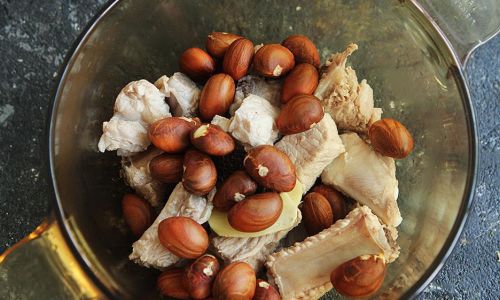
- Sauté Aromatics: Heat coconut oil in a large pot over medium heat. Add cumin seeds and toast for 30 seconds until fragrant. Stir in onions, garlic, and ginger. Sauté until golden (5–7 minutes).
- Add Spices: Sprinkle turmeric, coriander, and chili flakes. Stir for 1 minute to toast the spices.
- Incorporate Vegetables: Toss in tomatoes, carrots, and celery. Cook for 5 minutes until softened.
- Simmer with Broth: Pour in the broth and bring to a boil. Reduce heat to low, cover, and simmer for 20 minutes.
- Blend or Mash (Optional): For a creamier texture, use an immersion blender to purée half the soup, leaving some chunks intact.
- Add Jackfruit Seeds: Stir in the chopped seeds. Simmer for an additional 10–15 minutes to meld flavors.
- Season and Serve: Adjust salt and pepper. Ladle into bowls and garnish with cilantro or a squeeze of lime.
Regional Variations and Creative Twists
Jackfruit seed soup’s versatility shines through regional adaptations. Experiment with these ideas to customize your dish:
- Southeast Asian Twist: Add lemongrass, kaffir lime leaves, and fish sauce. Top with crispy fried shallots.
- Spicy Indian Version: Include mustard seeds, curry leaves, and a dash of garam masala. Serve with roti.
- Hearty Mexican-Inspired Soup: Mix in hominy, black beans, and chipotle peppers. Garnish with avocado and radish.
- Vegan Delight: Use coconut milk instead of broth for a dairy-free creaminess. Add spinach or kale for extra greens.
Pairing Suggestions and Serving Ideas
Jackfruit seed soup’s mild flavor pairs well with a variety of accompaniments:
- Bread: Serve with crusty baguette, naan, or cornbread for dipping.
- Rice: Ladle soup over steamed jasmine or basmati rice for a filling meal.
- Salads: Balance richness with a crisp cucumber-mint salad or pickled vegetables.
- Proteins: Add grilled shrimp, tofu, or shredded chicken for non-vegetarian versions.
Storage and Reheating Tips
Leftover soup can be stored in an airtight container in the refrigerator for up to 4 days or frozen for 3 months. Reheat gently on the stove, adding a splash of broth or water if the soup thickens.
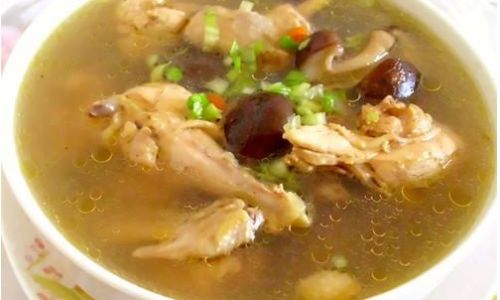
Frequently Asked Questions
Q: Can I eat raw jackfruit seeds?
A: No. Raw seeds contain compounds that may cause digestive discomfort. Always cook them thoroughly.
Q: How do I know when the seeds are fully cooked?
A: Boiled seeds should be tender enough to pierce with a fork but not mushy. The texture resembles a cooked potato.
Q: Can I substitute jackfruit seeds with another ingredient?
A: While nothing mirrors their unique flavor, chestnuts, taro, or water chestnuts offer similar starchy textures.

Q: Is this soup gluten-free?
A: Yes, as long as you use gluten-free broth and avoid adding soy sauce or other gluten-containing seasonings.
The Cultural Significance of Jackfruit Seed Soup
In countries like India, Sri Lanka, and the Philippines, jackfruit seed soup is more than a meal—it’s a symbol of resourcefulness. Historically, communities relied on every part of the jackfruit to minimize waste, transforming seeds into soups, curries, and even flour. Today, this tradition endures, with modern chefs reimagining the dish for eco-conscious diners.
Conclusion: Elevating Simplicity into Sustenance
Jackfruit seed soup is a testament to the beauty of humble ingredients. With minimal effort, you can transform discarded seeds into a nourishing, culturally rich dish that delights the palate and nourishes the body. Whether you’re a seasoned cook or a curious novice, this recipe invites creativity, encouraging you to experiment with spices, textures, and flavors. So next time you encounter a jackfruit, save those seeds—your soup pot will thank you.
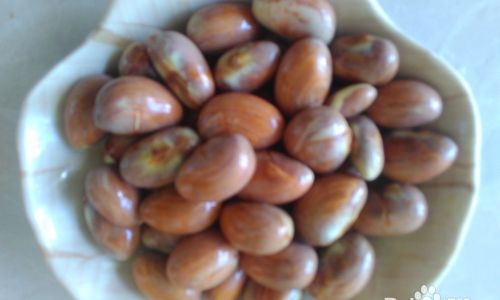
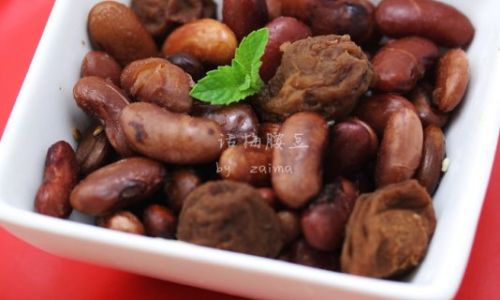
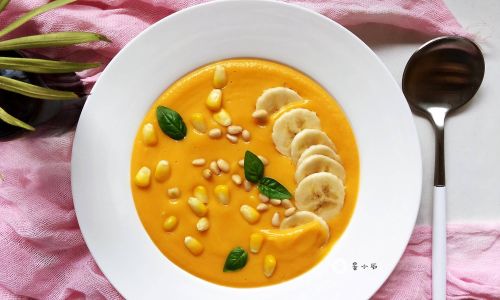

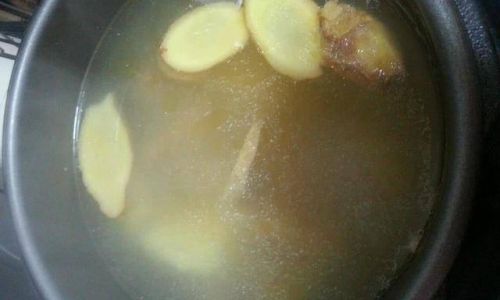
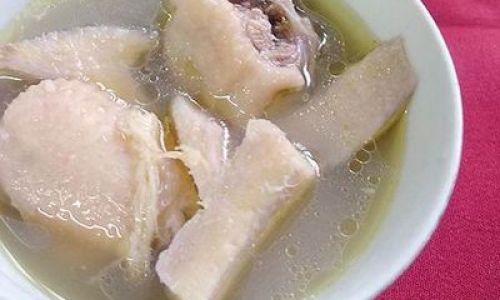
0 comments